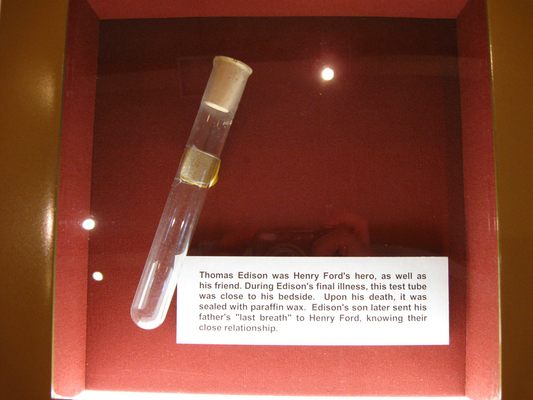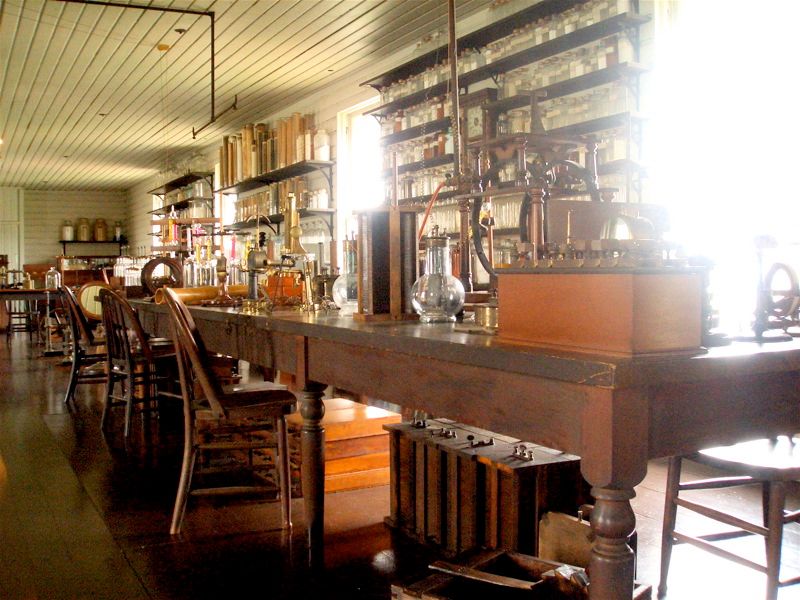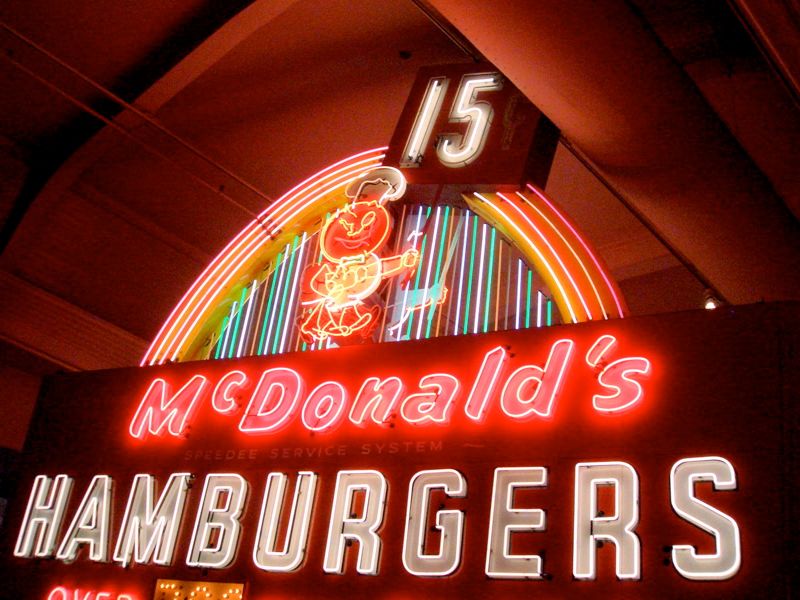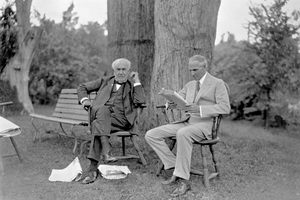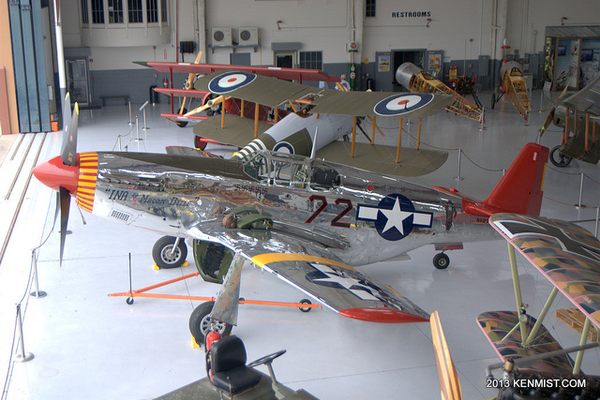About
Even great industrialists have heroes. Such was the case of Henry Ford and his idol Thomas Edison.
Ford grew up on a rural un-electrified farm, and as a young man he followed Edison's meteoric career as the inventor rose to become a national icon. Edison was Ford's role model, and as a young man Ford took a job at the Edison Illuminating Company working his way up to chief engineer.
In 1896 Ford was 33 and, though still working for Edison Co., had created his first experimental automobile—the Ford Quadricycle—during his off-time. At an Edison company party in New York, Ford had his first chance to meet his hero Edison, and was even able to explain his new automobile to the prolific inventor. Edison was impressed, and is said to have slammed his fist down and shouted "Young man, that's the thing! You have it! Your car is self contained and carries its own power plant." Edison himself had been working on the idea, but had only been considering electricity as the power source, so the idea of a gas engine was a new and somewhat novel one.
The words comforted Ford tremendously, who immediately set out to build a second prototype which became the Model-T. The two men became fast friends and would go on camping trips together along with naturalist John Burroughs, botanist Luther Burbank (creator of the Russet Burbank Potato), Harvey Firestone of Firestone Tires and, occasionally, President Harding.*
When Edison became confined to a wheelchair, Ford brought an extra one to his estate so they could race. At a commemoration of the 50th anniversary of the lightbulb, Edison ended his speech with a nod to Ford: "As to Henry Ford, words are inadequate to express my feelings. I can only say that in the fullest meaning of the term, he is my friend."
It's no surprise that Ford wanted something to remember Edison by after he passed away in 1931. As the legend goes, Ford asked Thomas Edison's son Charles to sit by the dying inventor's bedside and hold a test tube next to his father's mouth to catch his final breath. Ford was a man with many eccentricities (as was Edison) including some interest in reanimation and spiritualism, and some say that he was attempting to capture Edison's soul as it escaped his body in hopes of later reanimating the inventor.
The truth of the story is somewhat less intense, but has a fairly close resemblance to the legend. While Charles did not hold up a test tube to Edison's lips as he lay dying, there were a series of eight test tubes very near his bed.
In the words of Charles: "Though he is mainly remembered for his work in electrical fields, his real love was chemistry. It is not strange, but symbolic, that those test tubes were close to him at the end. Immediately after his passing I asked Dr. Hubert S. Howe, his attending physician, to seal them with paraffin. He did. Later I gave one of them to Mr. Ford."
The test tube itself didn't turn up until 1950 when it was catalogued in the Ford estate after Clara Ford's passing, and then promptly lost again until 1978 when it was discovered "in its cardboard mailing tube along with the hat and shoes under one of the display cases in an exhibit entitled, 'Henry Ford—A Personal History' in the Henry Ford Museum. It would then be discovered that the tube was labeled "Edison’s Last Breath?"
There is a further mystery and irony of this "last breath" test tube. It would seem as if Edison had quite a last breath indeed, as the Edison estate holds a collection of 42 test tubes all supposedly containing Edison's last breath.
Regardless of the hoopla over the last breath, the test tube is quite touching in its meaning. Although both men were known for all sorts of poor behavior towards their loved ones and mistreatment of employees, between them at least, there was clearly a profound mutual respect and admiration. The test tube stands as a last gift of friendship, memory, and inspiration from one inventor to another.
The museum has many other wondrous exhibitions in addition the Edison's Last Breath test tube (which can be found just inside the door to the right) including the Wright brothers' bicycle shop, Buckminster Fuller's Dymaxion House, George Washington's camp bed, and both the rocker in which Lincoln was shot and the car in which JFK was assassinated.
*There is a story that on one of these camping trips the men got into an accident on the way back. A farmer pulled the car from the mud with his old Model-T. Starting with Ford the men introduced themselves to the farmer as "the man who invented that tractor,""the man who made those tires," "the man who invented the lightbulb," and as the president of the United States, to which the farmer replied by pointing to Burbank and saying "and who is he, Santa Claus?"
Related Tags
Community Contributors
Added By
Published
April 28, 2015
Sources
- http://www.thehenryford.org/exhibits/pic/2004/july.asp#more
- http://www.corpse.org/archives/issue_1/palmer.html
- http://www.straightdope.com/columns/read/873/is-thomas-edisons-last-breath-preserved-in-a-test-tube-in-the-henry-ford-museum
- http://www.hfmgv.org/museum/exhibits.aspx
- http://apps.detnews.com/apps/history/index.php?id=105
